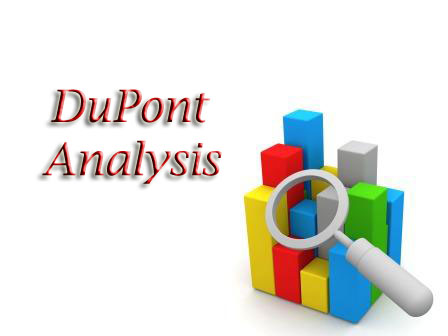DuPont Analysis is one of the famous tools that you will get to know in the finance industry. It is also known as DuPont identity as well as the DuPont Model. There are lots of things where this framework is used in order to get smooth and hassle-free solutions on various points. This technique is primarily used by the investors and financiers to understand the financial person, relations and other vital points.
DuPont Analysis:
DuPont Analysis is considered as ROE or Return on Equity ‘s extended examination of a company. This framework is used to analyze asset turnover, Net profit margin, and financial leverage. DuPont Analysis was developed in the year 1920 by DuPont Corporation. In other word, DuPont Analysis is basically to break down the ROE and to do the analyzation regarding how the company can boost up the return for shareholders.
Interpretation of DuPont Analysis and Example
DuPont Analysis is an extremely useful framework which can give the border picture when it comes to company’s return that’s earning on the equity. The technique helps the investors and financiers to understand the company in a better way. It also shows the strength and weakness of the company and the spot where both lies. Along with that, DuPont Analysis can help in understanding the chances of improvement if its possible or not.
For example, If the shareholder is not satisfied with the company’s ROE and it’s lower than expected. The company can use DuPont Analysis to understand the points and reasons behind the lower ROE. Not just that, it can also help in assessing the low asset turnover, low-profit margin and poor leverage too.
Calculate ROE and Formula:
Well, calculating ROE or Return on Equity can be expressed as a percentage. Calculation of ROE can be done if the company’s equity and net income are positive. Not just, the company can also boost their ROE if it generates a higher margin in net profit, high financing leverage and efficiency use the assets to get more sales. Here is the formula that can be used to get the ROE of the company.
Return on Equity= Net profit margin X Asset Turnover X financial leverage
Return on equity = Net income /sales X sales / total assets X total assets / total equity
What are the uses and benefits?
DuPont analysis is, no doubt a potential and helpful tool that makes it easy for investors to understand the equity holdings and also get better choices. The best advantage of using this tool is to get a better picture of a company and its overall financial health. Including the company’s performance and comparing the limited equity to the valuation tools.
The analyzing gives a better assessment of ROE that can also help in increasing the figures. The tool can be an easy solution for the companies who want to improve the elements which can affect the value, assets and performance. Apart from that, for the investors, DuPont Analysis can actually pinpoint for the investors to understand the equity returns sources which can decrease or increase in the future.

Hey, this is Johny Sehgal. I am the owner and caretaker at Finance Jungle. I completed my education in BSC and now heading towards the digital marketing industry. I usually have interests in reading, playing games and watching movies. I also love to write content based on quality information. The main motive of mine is to provide the top and best quality information to my readers. Finance Jungle is the blog for the same.













